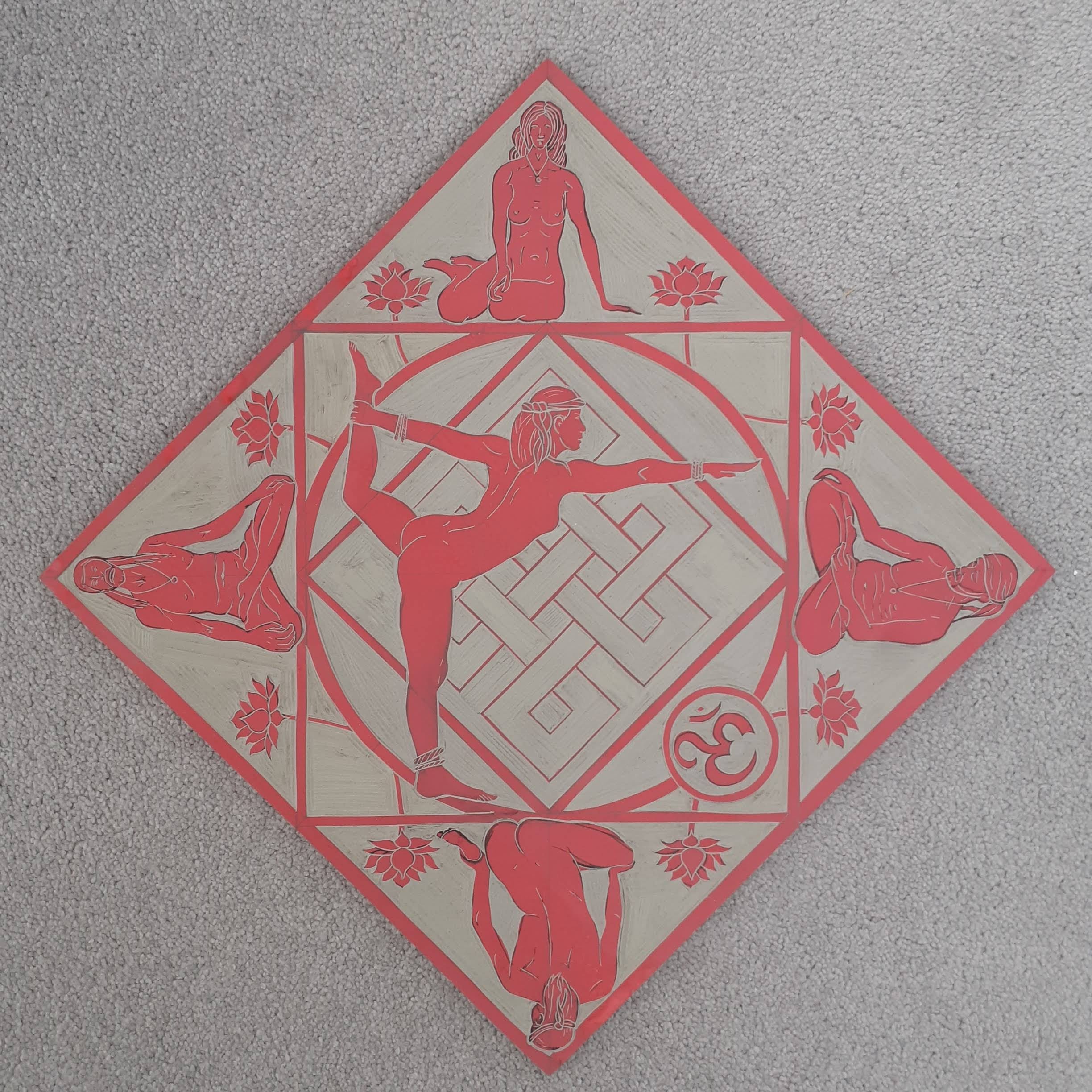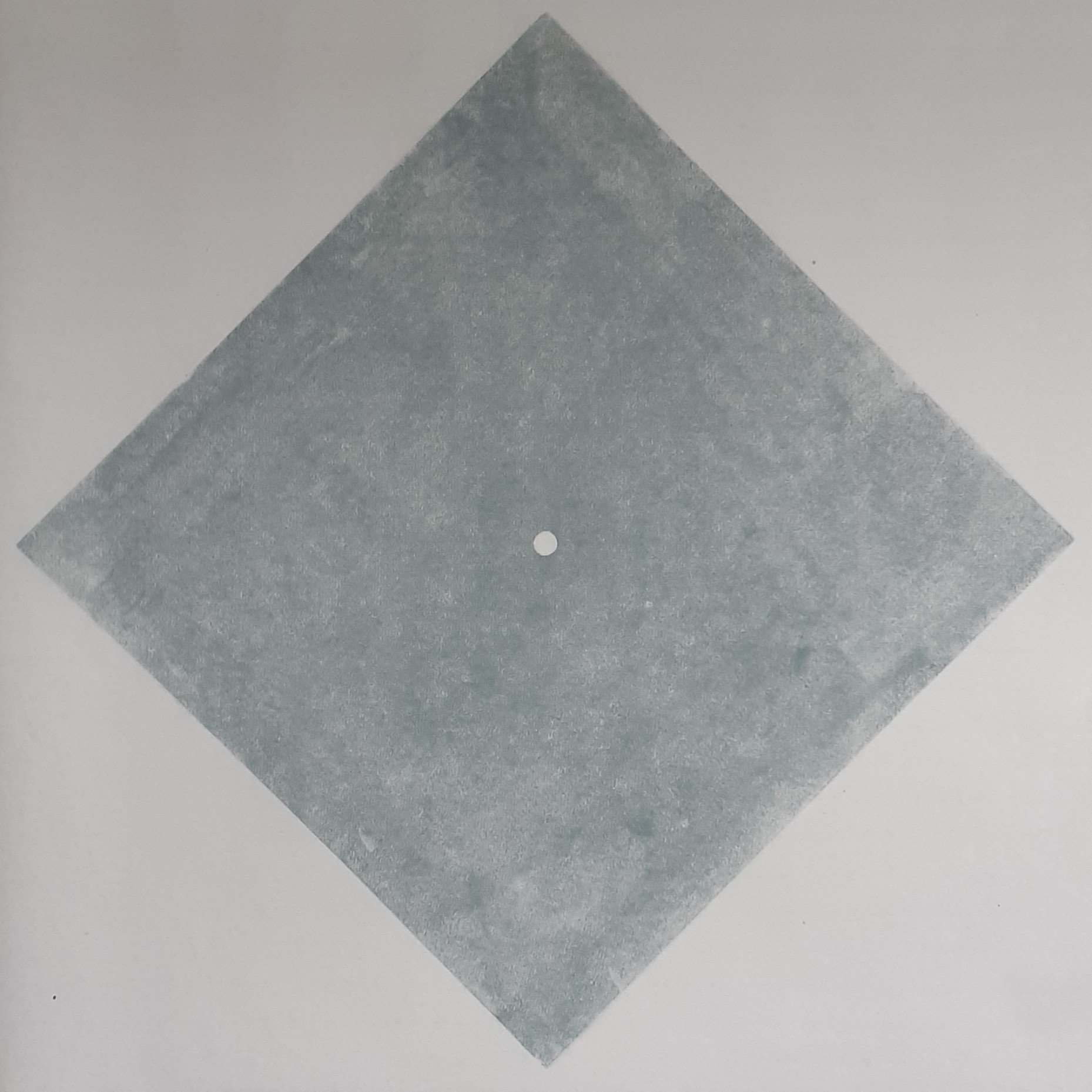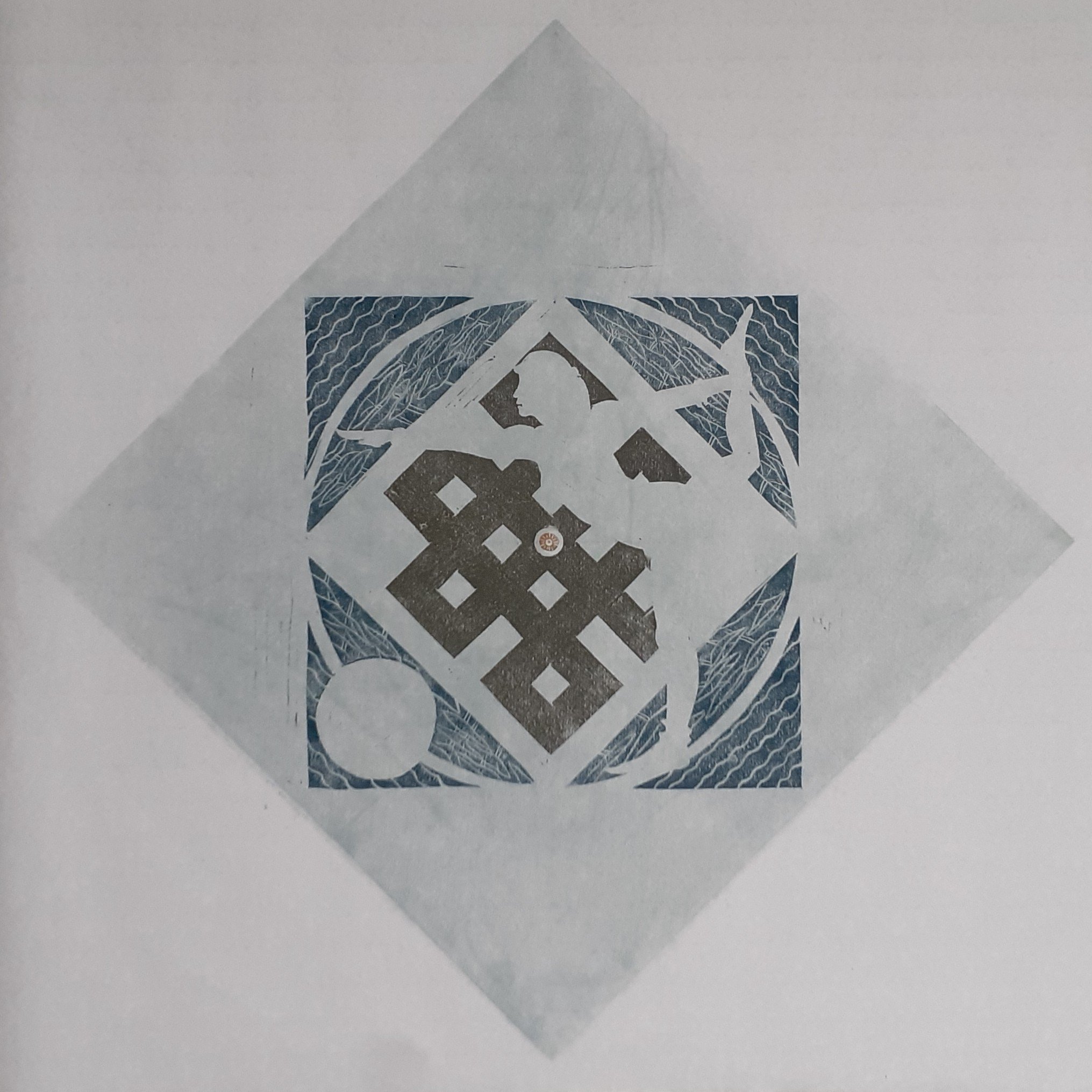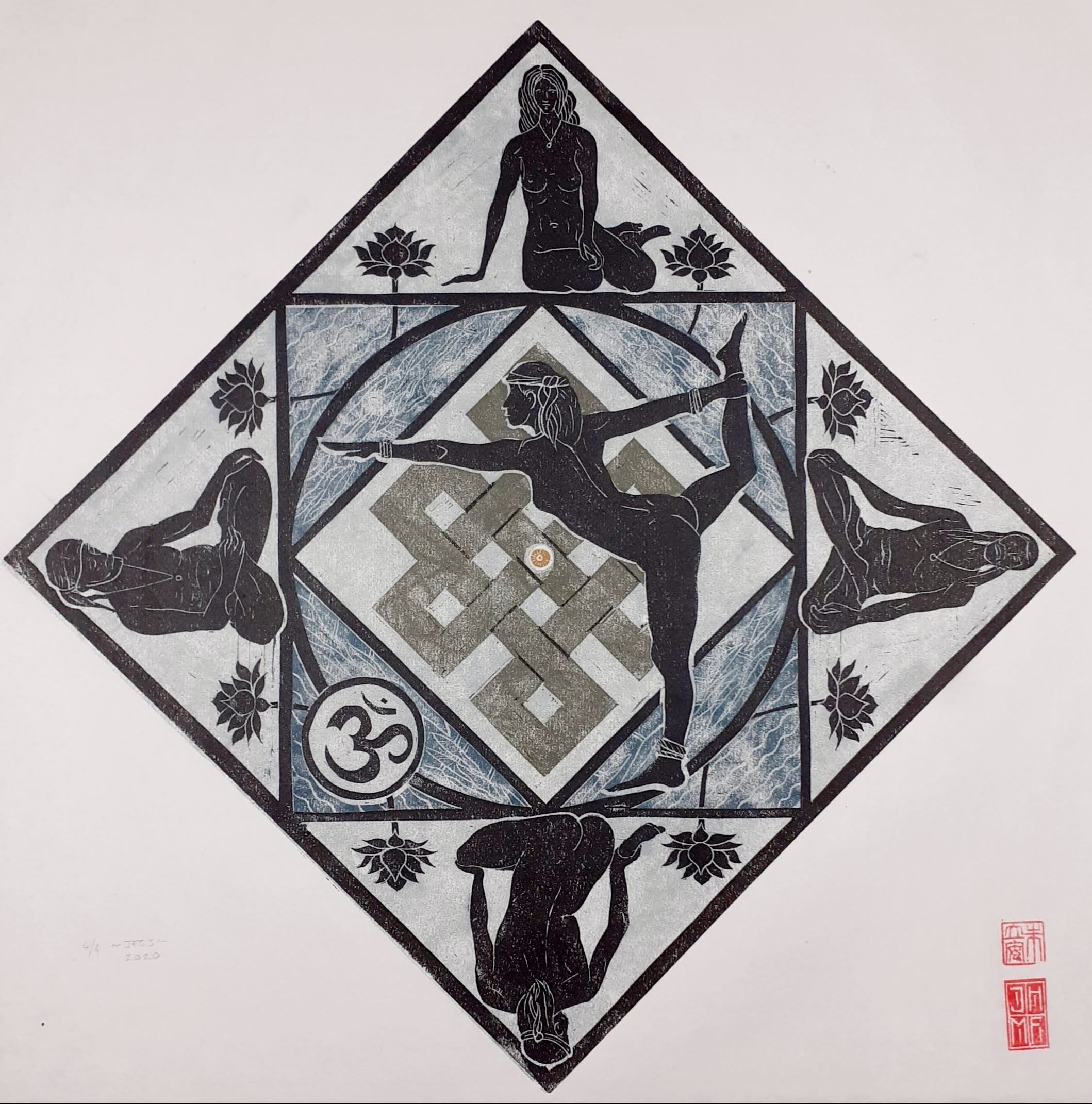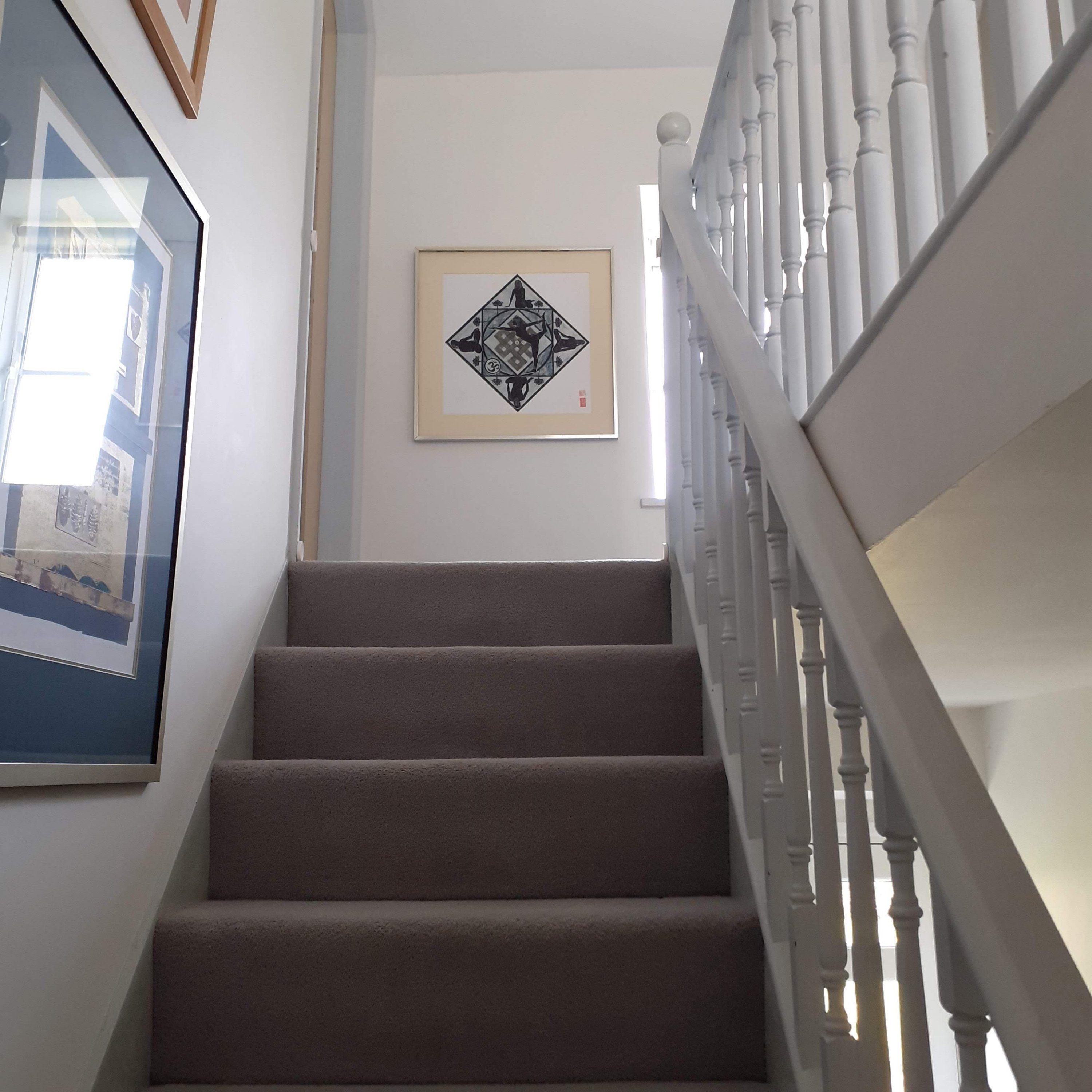This was an interesting print in many ways. I only started printing a year ago, so each one is a whole new experience for me. This is a woodblock print, cut into blanks of lime wood I bought in Cumbria. The initial inspiration came from a beautiful photograph of a narwhal in the Geographical Magazine. This lead to a bit of research and a lot of sketching.

Using these sketches, I came up with a basic composition of two whales. Initially I had another tail and a tusk in it, but that looked too cluttered.
Before cutting a block, I spent a week sailing in the Canaries, where we had a wonderful sighting of pilot whales, which gave me thoughts on light on the animals.

I wanted to emphasise the underwater look, and that reminded me of a painting I produced a couple of years ago, based on Natasha Brookes’ short film of swimming in frozen lakes in Snowdonia.

Putting all of these together gave me the basis for the print. The background printed from one block first, using a grade colour to try to give a feeling of deep water below a sunlit surface. The image shows the first layer printed above the inked block.

Each whale was then printed from a separate block, so I could vary the density of colour, to heighten the overlap.


One feature of the Snowdonian swimming painting I liked was the hint of schools of fish. Rather than cutting another block, I cut a paper stencil and rolled ink through it onto a blank lime wood block and then pulled a print from that. This smudged the fish a bit, which was probably a good thing.



Putting all of this together gave me the final print, which I have stamped in an edition of eight.

